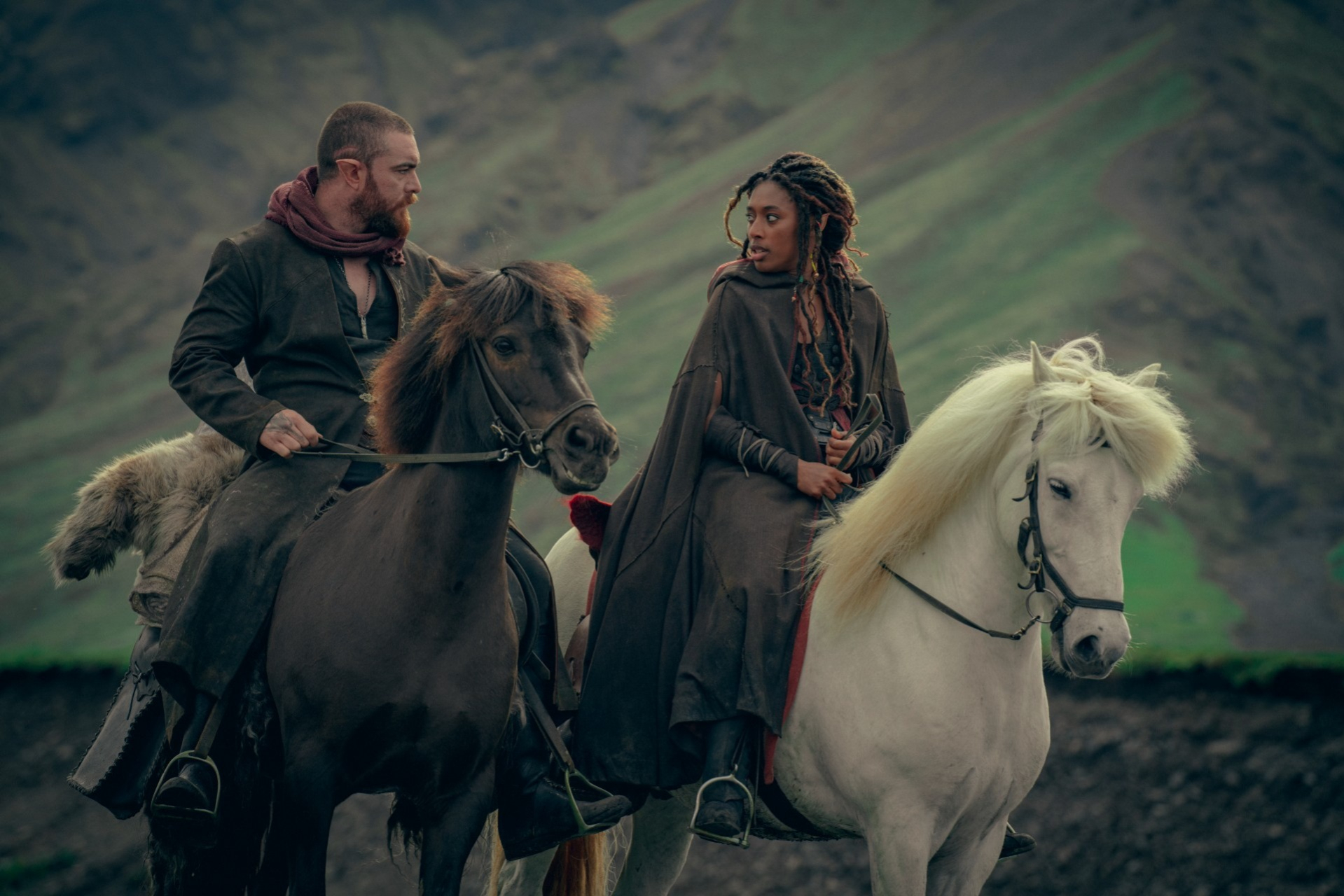This article contains spoilers for The Witcher: Blood Origin and The Witcher
While The Witcher: Blood Origin did what it set out to do – show what caused the Conjunction of the Spheres – this four episode miniseries ultimately left us with more questions than answers. Between Jaskier’s (Joey Batey) involvement in the Elves’ fight, the origin of the Wild Hunt, and the start of Ciri’s Elder bloodline, there are plenty of things that we hope season 3 of The Witcher will address when the series returns next summer.
Here are the burning questions we still have after watching The Witcher: Blood Origin.
What do the Scoia’tael want with Jaskier?
The Witcher: Blood Origin opens on a bloody fight between Temerian soldiers and Elven warriors, with poor Jaskier somehow caught in the middle. The last time we saw the bard in the season 2 finale of The Witcher, he was at Kaer Morhen trying not to be killed by the monsters let loose by Voleth Meir. He and Geralt (Henry Cavill) appear to be on good terms again, but it would make sense that they would part ways as Geralt, Yennefer (Anya Chalotra), and Ciri are set to embark on a journey to find out more about Ciri’s ancestry and help her learn how to control her abilities.
Even if he does join the trio on their journey, using his connections as the Sandpiper to help them find safe passage across the Continent, Seanchai (Minnie Driver) reveals that Jaskier was being held prisoner by the Temerians, and the Scoia’tael invaded the camp specifically to save him. While Jaskier did make a name for himself helping Elves escape the North in season 2 of The Witcher, that doesn’t necessarily explain why the Scoia’tael would risk themselves to save him.
In Witcher lore, the Scoia’tael are non-human guerilla warriors fighting against their discrimination by humankind. They are allies of Nilfgaard, helping them fight their enemies in exchange for land and the right to govern their own people. The seeds of the Scoia’tael began in season 2 of The Witcher with Nilfgaard giving Elves refuge in Cintra in exchange for joining their army, but this is the first time that the group has been referred to by name in the Netflix Witcher universe.
Do they think Jaskier will be able to help Francesca (Mecia Simson) find Ciri? Do they simply want his help rescuing more Elves from the North? Whatever happens, I just hope Jaskier is okay in the end.
Were Ciri’s ancestors involved in the creation of Witchers?
Season 2 of The Witcher revealed that Ciri’s Elder blood has the potential to be used to create more Witchers. While we don’t yet know for sure if the mutagen is successful, we do know that this ability likely comes from Ciri’s ancestral connection to the first Witcher prototype, Fjall (Laurence O’Fuarain).
Ithlinne’s prophecy at the end of Blood Origin appears to connect Ciri’s bloodline to Éile (Sophia Brown) and Fjall’s child, who was conceived after Fjall underwent the procedure to become the first Witcher. Even though Fjall had to be killed because the power within him was too strong, that doesn’t necessarily mean that the blood of his offspring would suffer the same fate. While his descendants may not have become Witchers themselves, seeing as the first “official” Witchers were created from human children rather than Elves, their blood could have had an important role in creating the first successful Witcher mutagen.
What does Ithlinne’s prophecy actually mean?
In the first two seasons of The Witcher, Ithlinne is this larger than life figure from Elven history who once prophesied the end of the world. In Blood Origin, we get to meet Ithlinne (Ella Schrey-Yeats) as a young girl. Éile receives two prophecies from her, the first telling of her journey to come and the second telling the future of her unborn child. The ending of this prophecy is foreboding and connects to her other more well-known prophecy. In this prophecy, Ithlinne says “The Lark’s seed shall carry forth the first note of a song that ends all times, and one of her blood shall sing the last.”
While this prophecy appears to connect this unborn child to Ciri and her monolith-shattering abilities, we’ve already seen that Ithlinne’s prophecies aren’t entirely literal. The beast that Éile slays isn’t Balor’s (Lenny Henry) monster, but rather Fjall after his transformation goes too far and he becomes a monster himself. It will be interesting to see how Ithlinne’s prophecies connect in season 3 of The Witcher and how they actually come to pass.
What’s the deal with the realm Eredin is stranded in?
At the end of Blood Origin, we see Eredin (Jacob Collins-Levy) stranded in another realm after following Balor through Xin’trea’s monolith. It’s the same desolate realm that Balor has been visiting throughout the series and the place where he obtains chaos magic. And it appears to be the same realm that Ciri, Geral, and Yennefer are transported to in the season 2 finale of The Witcher.
But what exactly is this place and what power does it hold? We now know that this is where the chaos magic used by the mages in The Witcher comes from, and the home of powerful adversaries like Voleth Meir and the Wild Hunt, but was this realm something before that? Has it always been a barren place, or was it the victim of an apocalyptic event like the one Ithlinne has prophesied for the Continent? Is this what the Continent’s future looks like if the realms ever truly converge?
Hopefully these questions and more will be answered in season 3 of The Witcher as we see Ciri learn more about her abilities, her heritage, and her destiny and as Jaskier decides what to do with the knowledge given to him by Seanchai. Summer 2023 can’t come fast enough.
